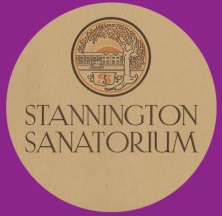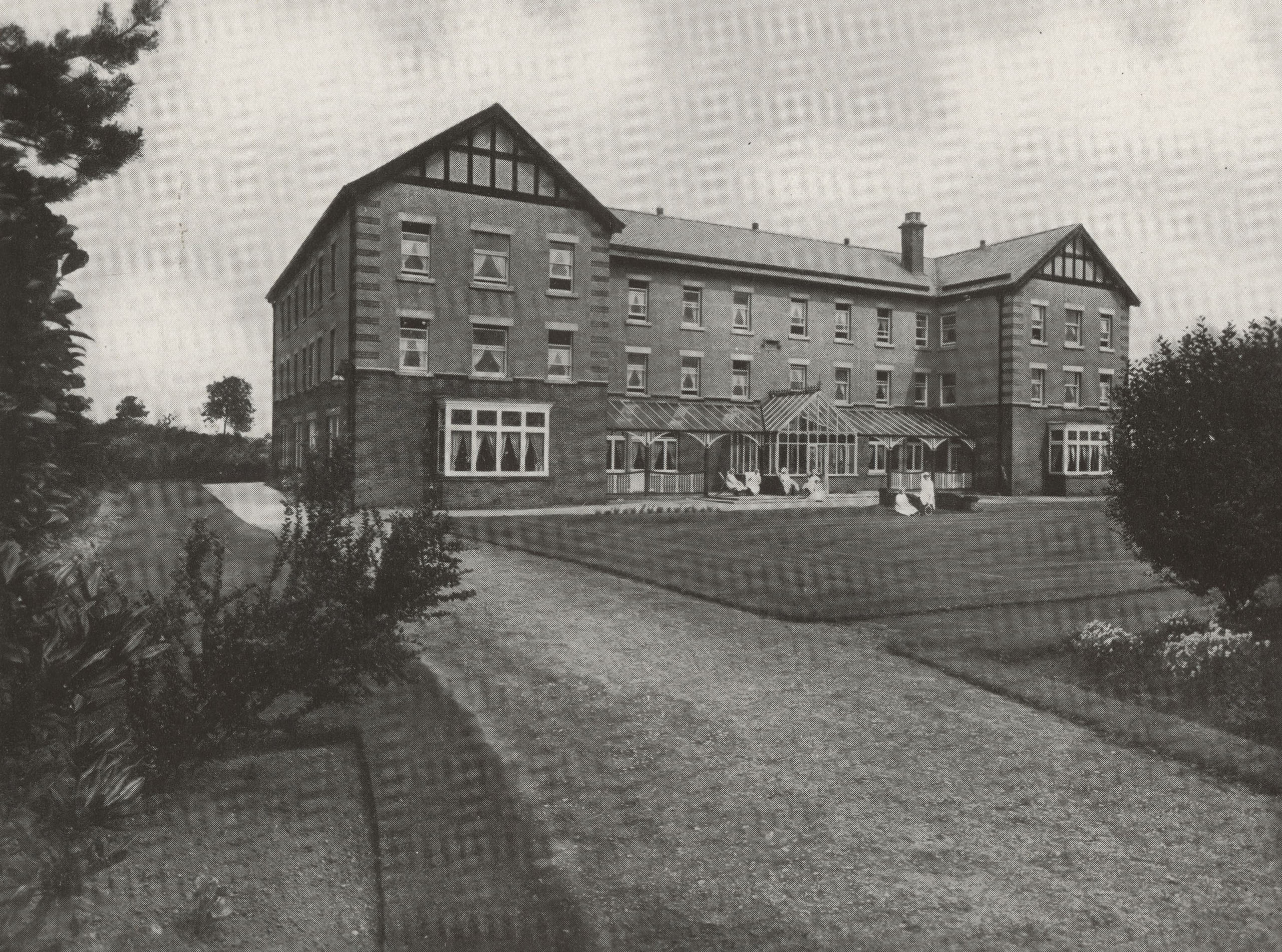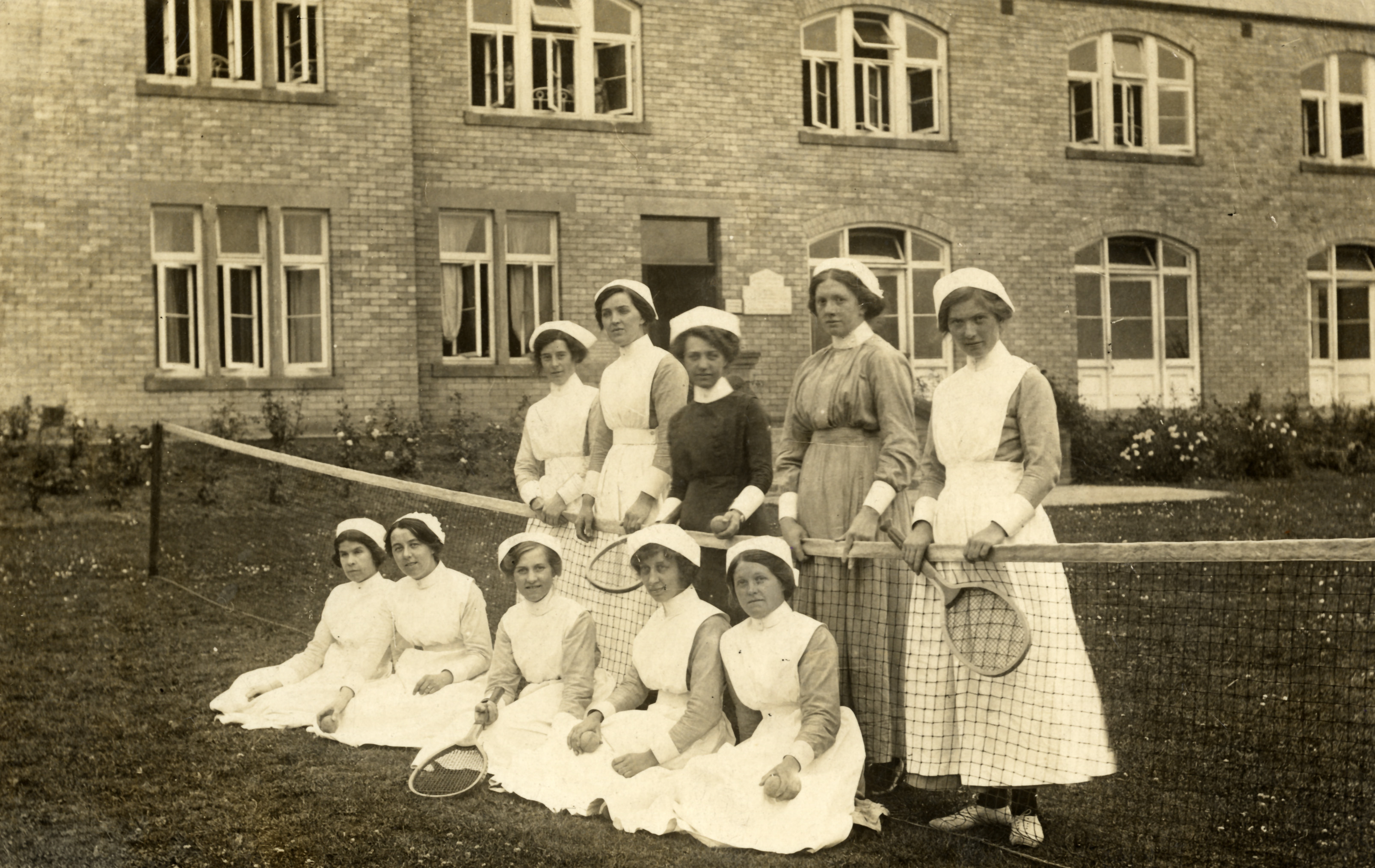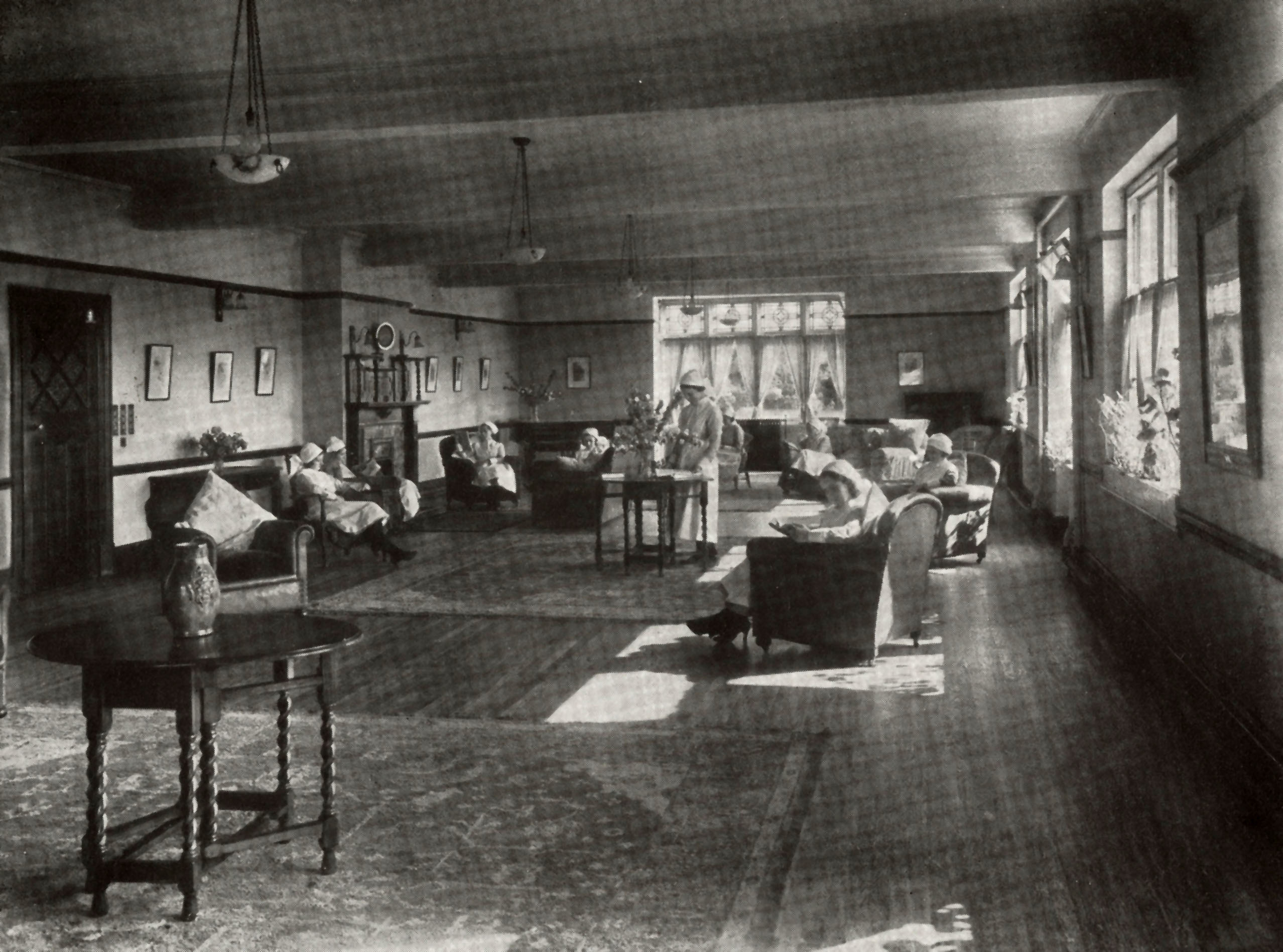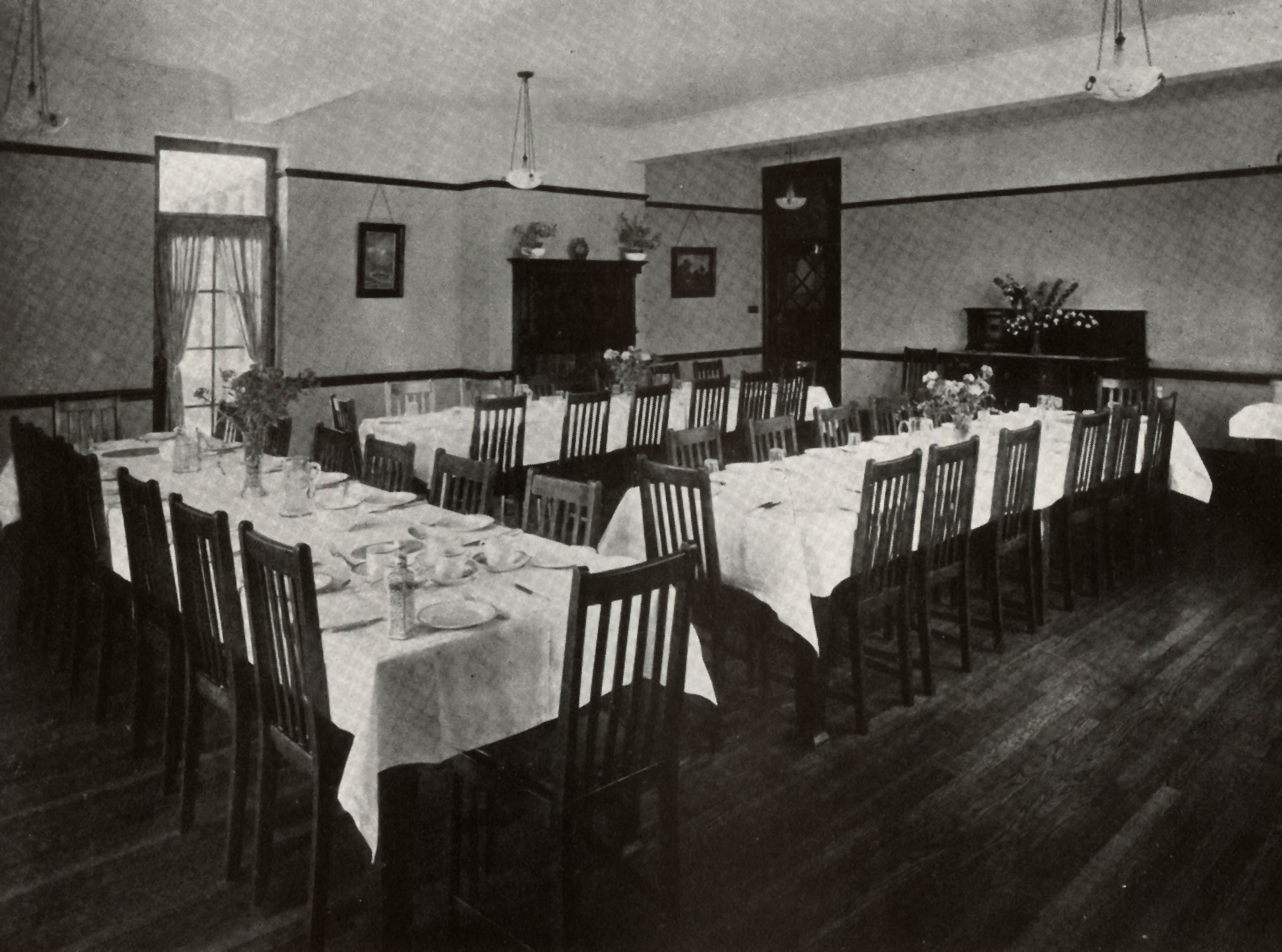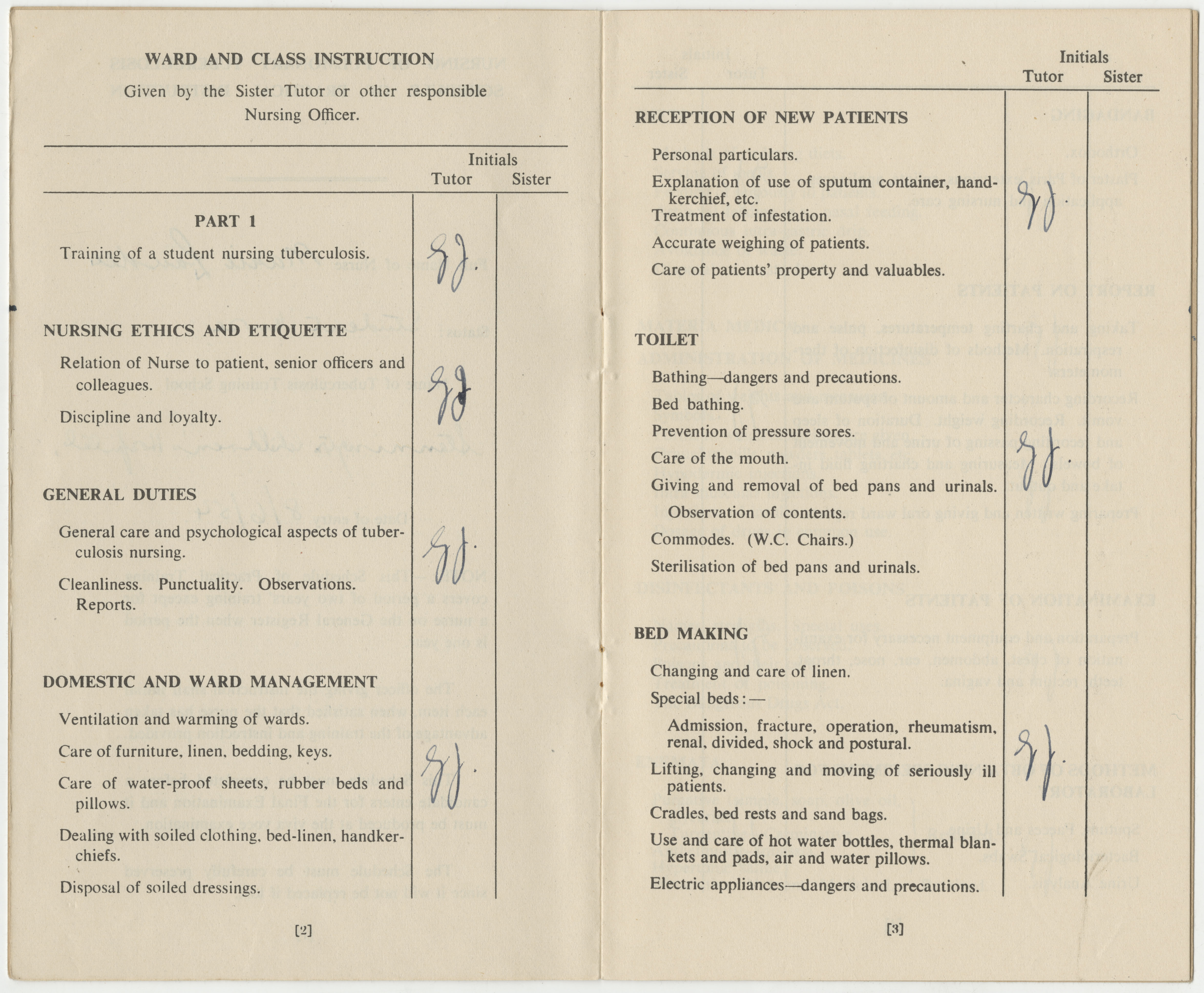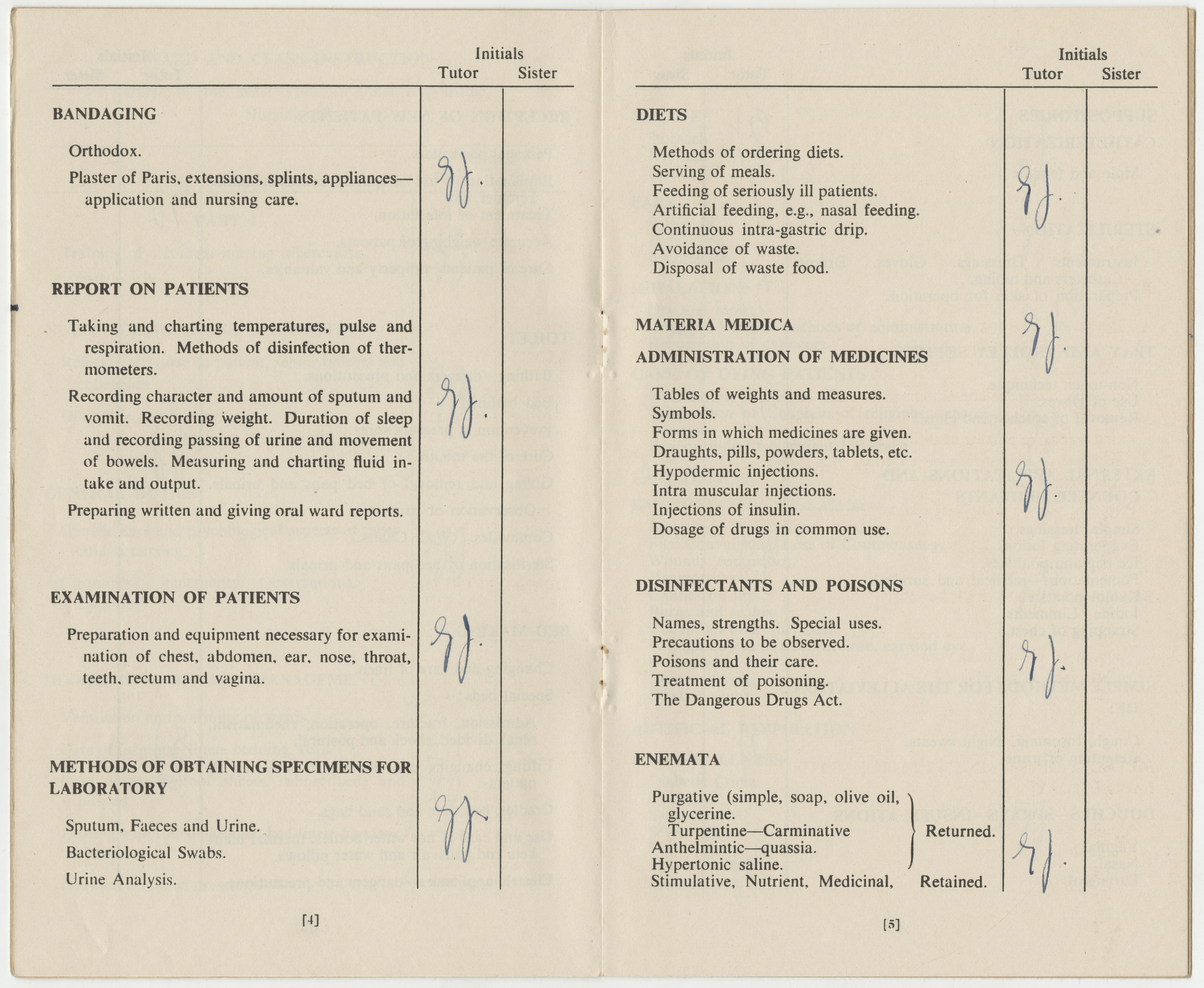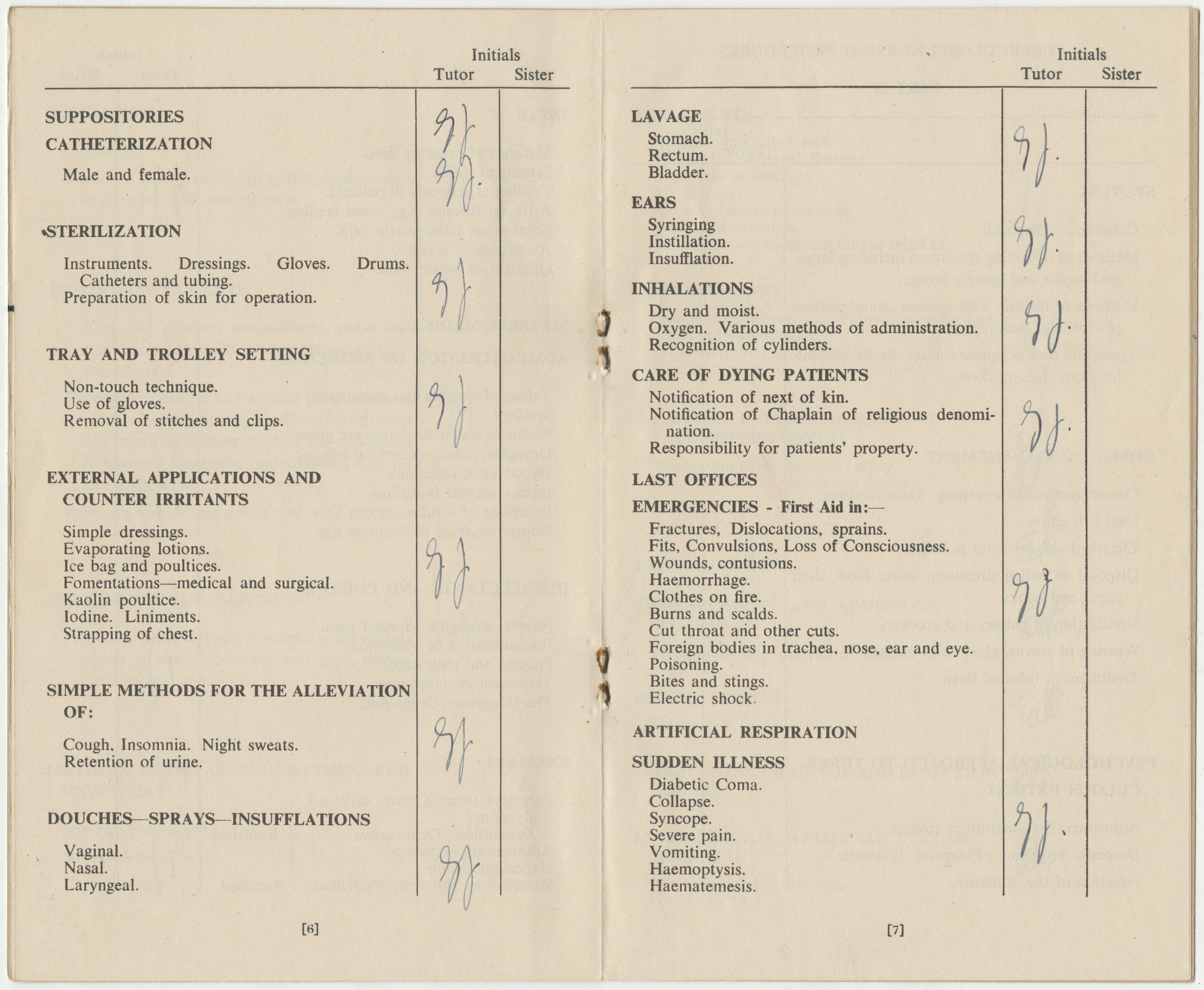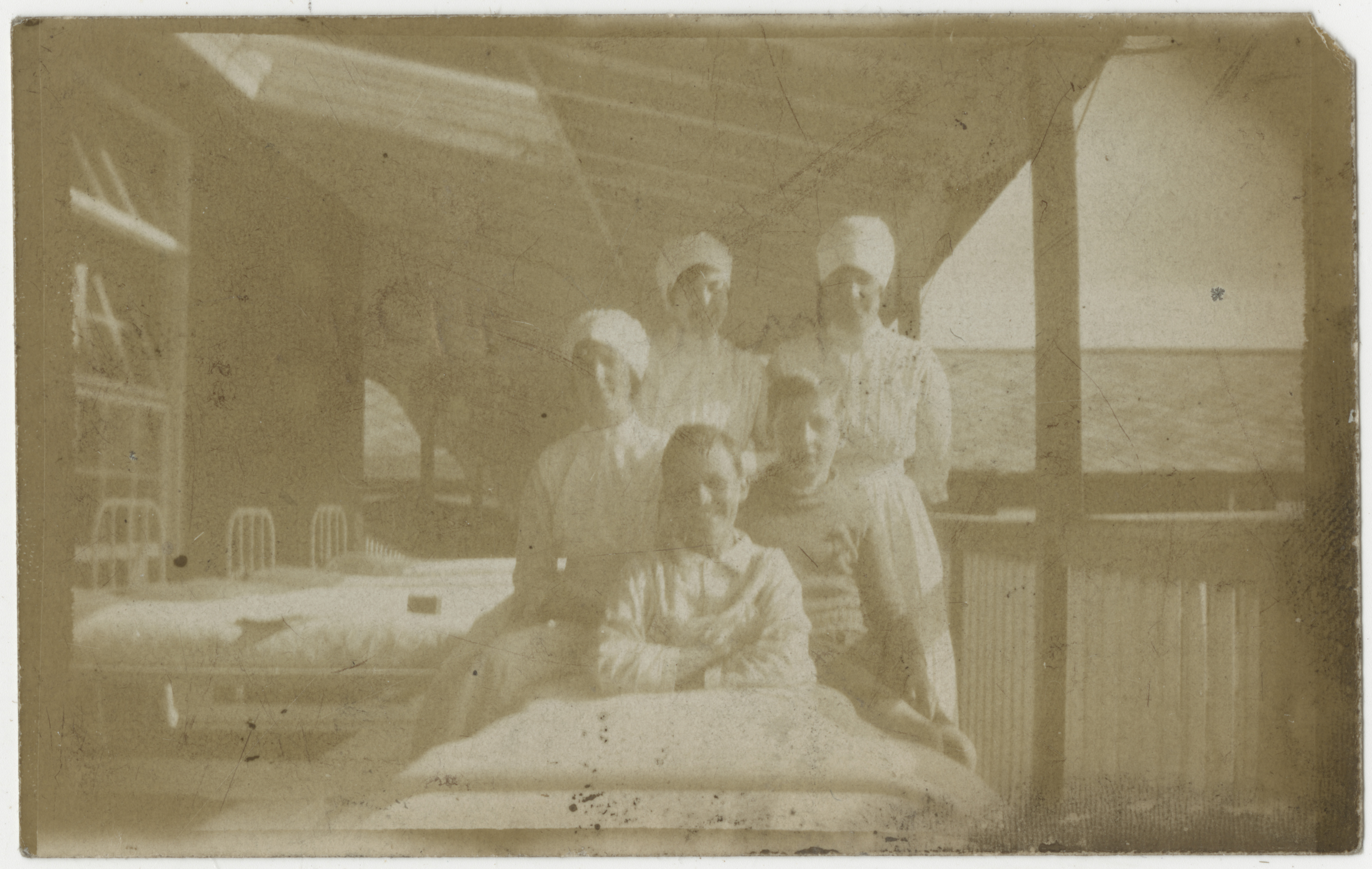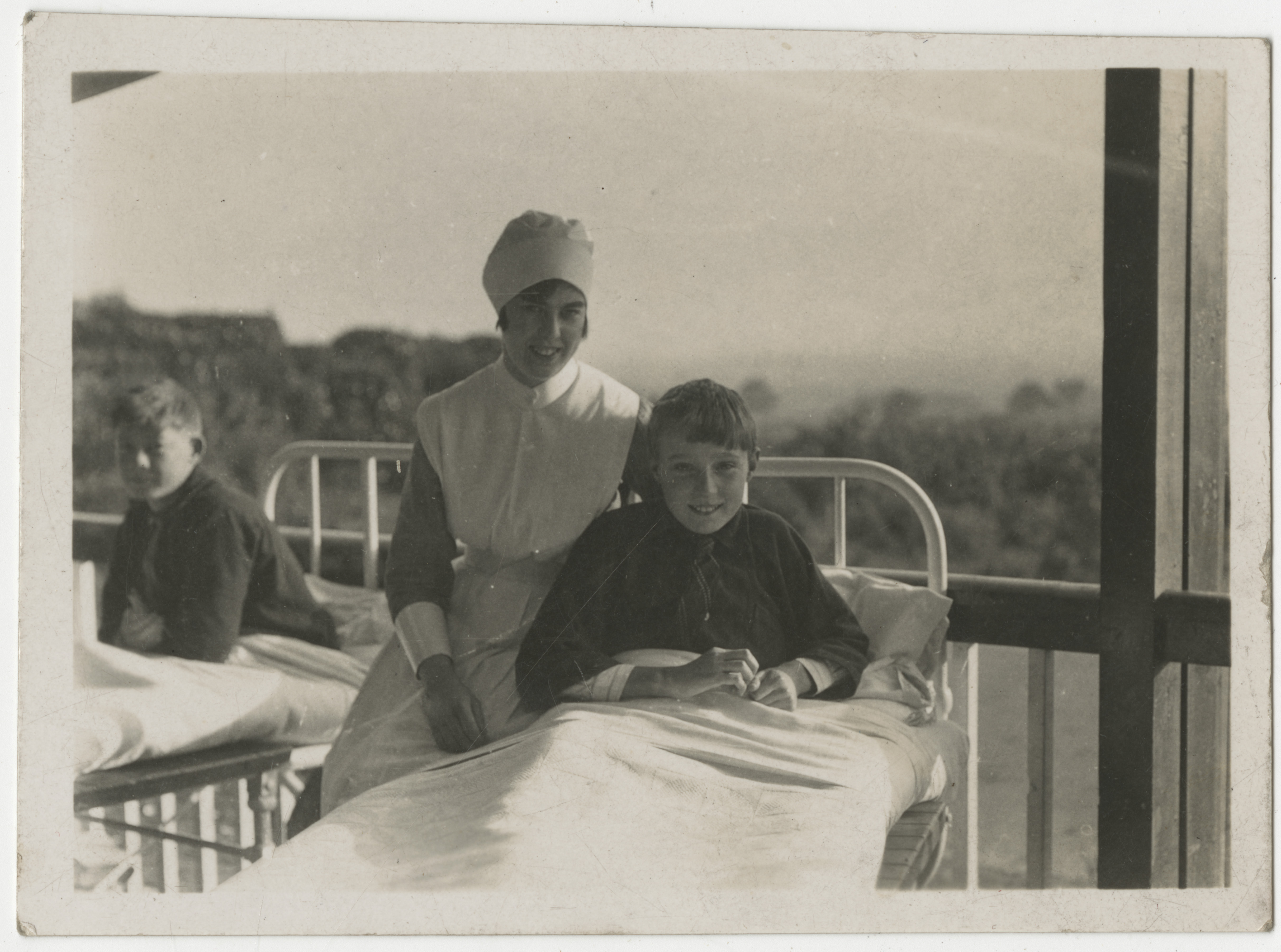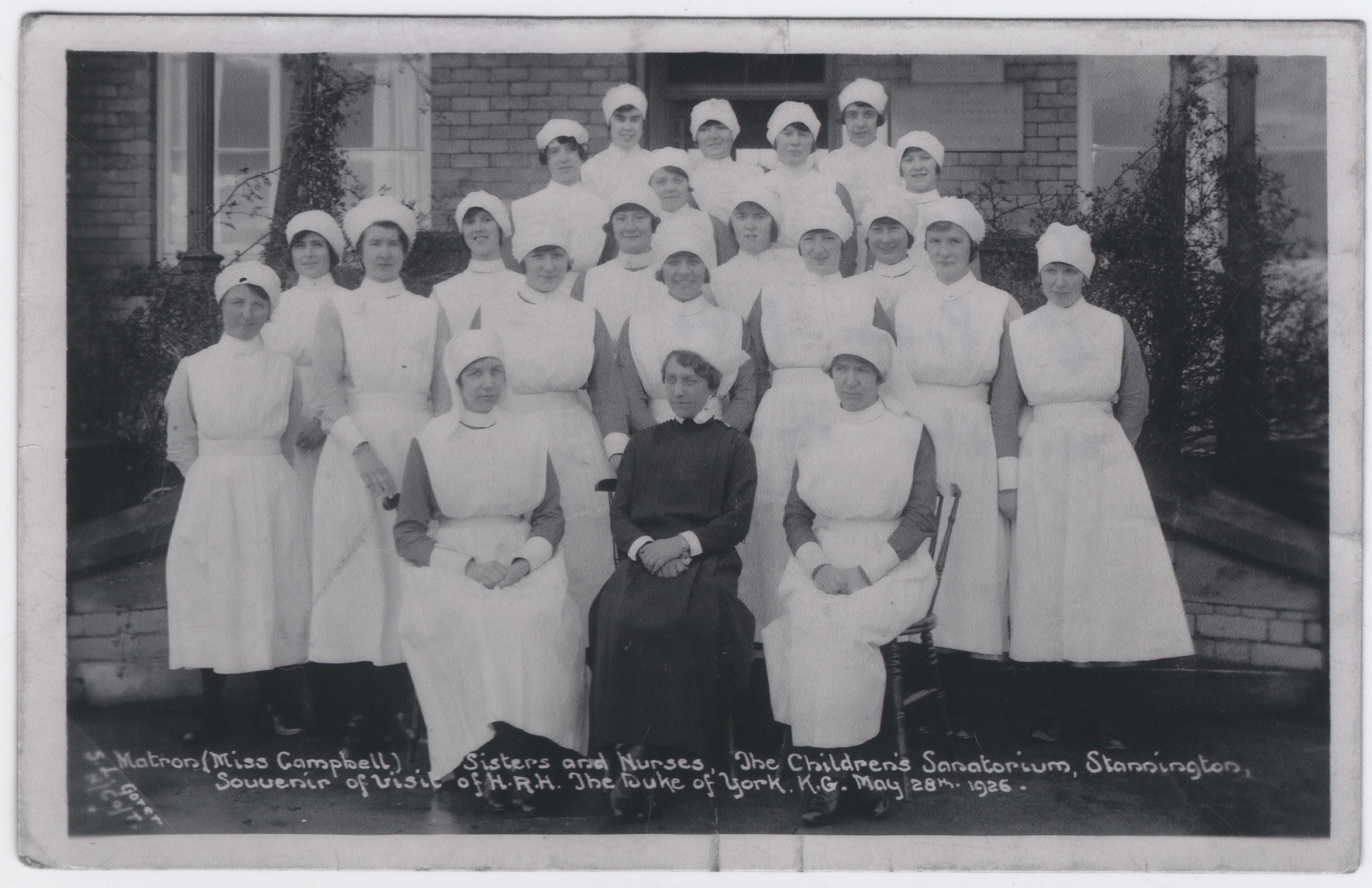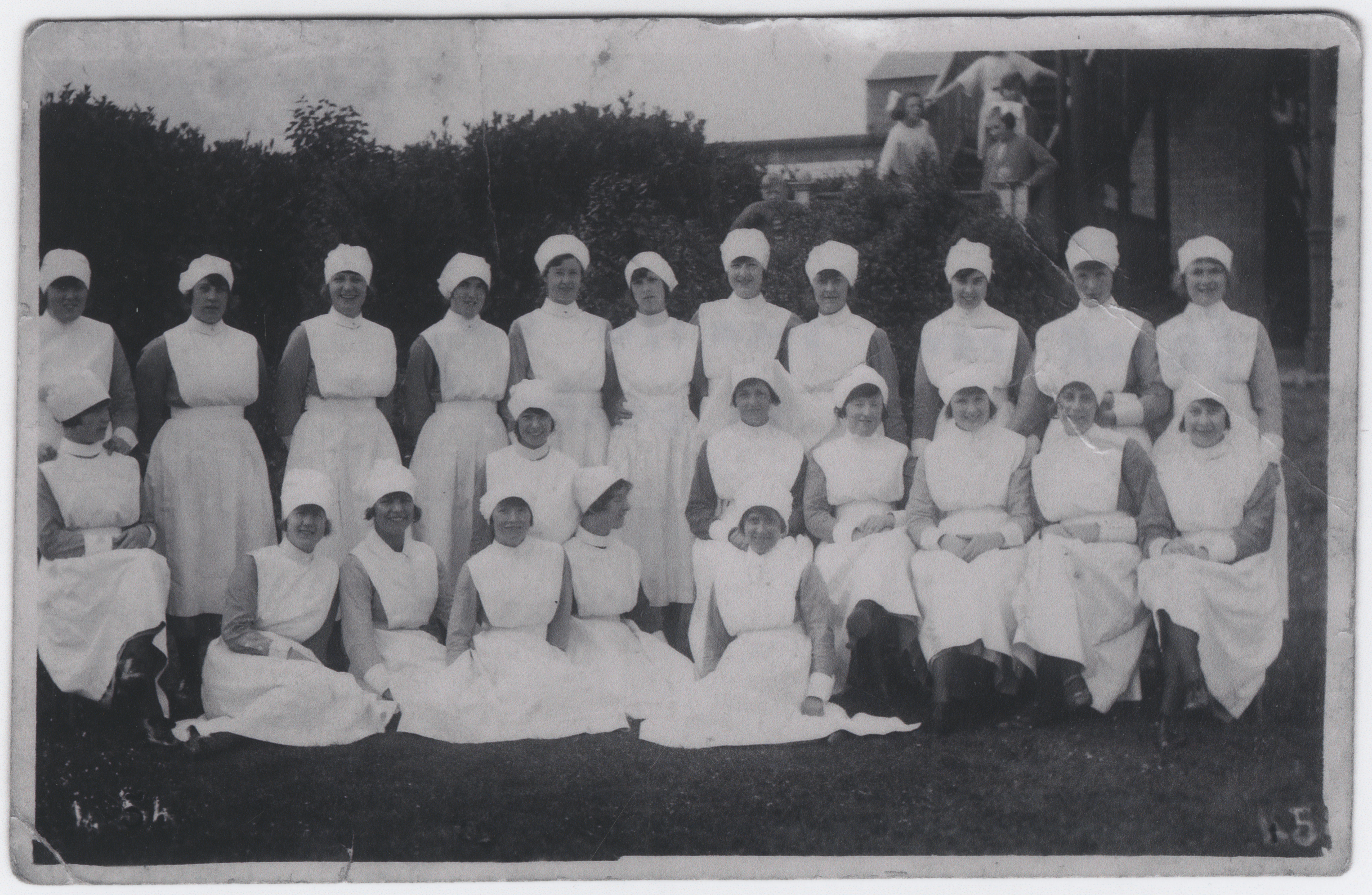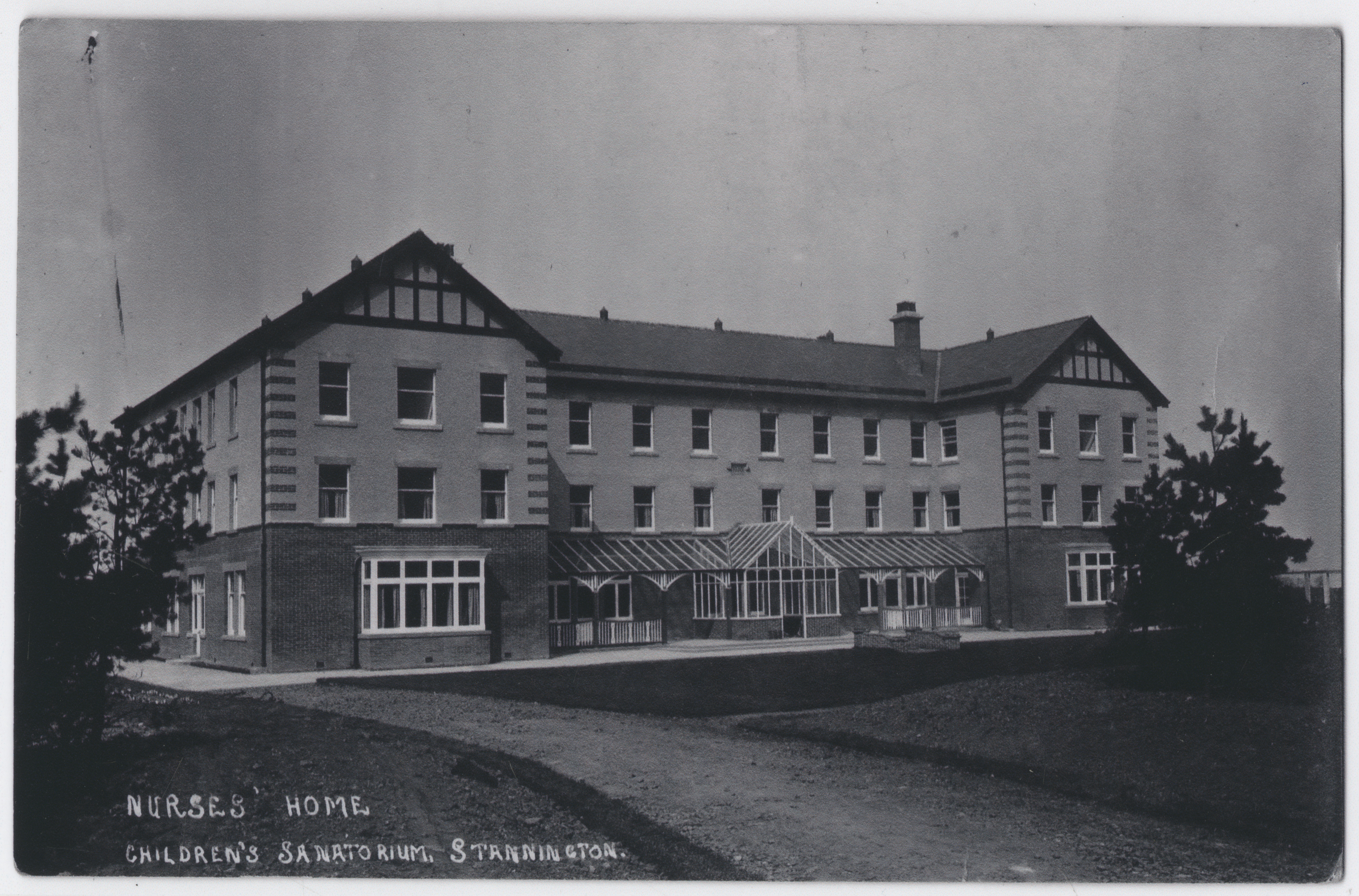We our happy to now announce at just past our halfway point in our repackaging and digitisation project of the 1944-1966 patient files we are launching a new collection of Flickr sets of some of the files. Our hope in this is that we can showcase some of the types of documents for those wishing to study the files.
We hold the patient files covering the period 1937 to 1966. The first files are pre-printed sheets, which were sorted and bound into books after the patient’s discharge. These give the medical and family history of the patient, the tests done, temperature charts and diagrams of the front and back of the torso to record observations on the chest. Additional sheets of temperature charts and diagrams could be pasted in once the first sets were used. The project’s first phase looked a lot at these and there is much about them in previous posts. We have chosen one as an example, which you can see here. In 1943 the staff transitioned to using files, which were also filed by the date of discharge until 1946.

We don’t find the same documents within each file, but wanted to show a range of what we commonly find, and have divided these into what we have described as ‘core’ and ‘non-core’. The core documents give an overview of each case and are appended to our online catalogue, available to search here. Non-core documents include temperature charts, correspondence and less common documents; these cannot be viewed via our catalogue. Our new Flickr page will give a glimpse of how the whole files and their associated radiographs look.
However, choosing which files to use has been difficult, as the cases and the contents of the files themselves are so varied. We have chosen two files from each of the three types of disease identified by the patient files – pulmonary (in a blue file), bones and joints (in a green file) and cases of Tuberculosis where tissues were affected (in a pink file). For each type we have shown an earlier case, around 1946-1948, and another from after the introduction of streptomycin and similar antibiotics at Stannington, around 1949-1953. After 1953 we have fewer radiographs, and we wanted to ensure these were included too. Each file has been redacted to remove the names and personal details of each patient, leaving details of treatment, condition and other aspects of their stay at Stannington. We have left out long runs of temperature charts, superfluous backs of documents, and included only a few of the radiographs where they are taken repeatedly over months and years. However we can always be contacted by emailing archives@northumberland.gov.uk if you have any further questions.
Rather than taking you through each file here when they can be explored fully on Flickr, we will look instead at some of the types of documents that are included in the files. We have divided the non-core documents into those we commonly find which are present in some combination in most files, and those we find less regularly, even rarely, in some of the files.
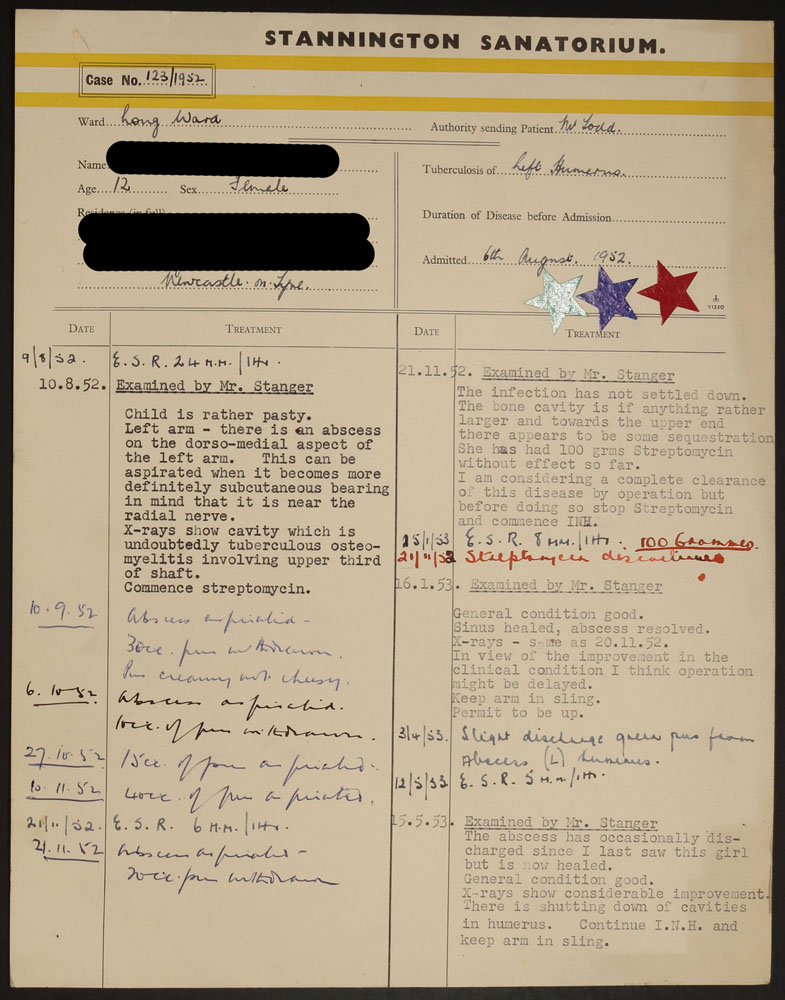
Core documents:
- The file – gives the patient’s name, address, date of birth, sex, age, local authority, religion, admission and discharge dates, whether notification was given before or after admission, when immunised for diphtheria, if permission was given for dental treatment and anaesthetic, diagnosis and result of treatment. On the inside of the file was recorded the patient’s family history, results of tests, sputum reports, other pathological reports and X-ray reports (which were later recorded on the X-ray card).
- Patient history – a short summary of the patient’s family history and general condition on arrival, followed by details of their progress at Stannington, often quite similar to the treatment card.
- Treatment card – written up by the doctors with changes in condition and treatment. Like the above image, later examples are often quite colourful, with streptomycin and other drugs written in red and a different coloured star given to show which drug a patient was given, as shown in the above example. Red stars were for streptomycin, blue for para-aminosalicylic acid (PAS) and green for isonicotinic acid hydrazide (INH). The three were often used together, forming an effective combination treatment.
- Discharge report – written summary of the patient’s progress while at Stannington, and their condition on discharge. A copy would often be sent to their local doctor, clinic or the hospital that referred the patient to Stannington.
- X-ray card – listing dates, serial numbers, locations and settings of X-rays.
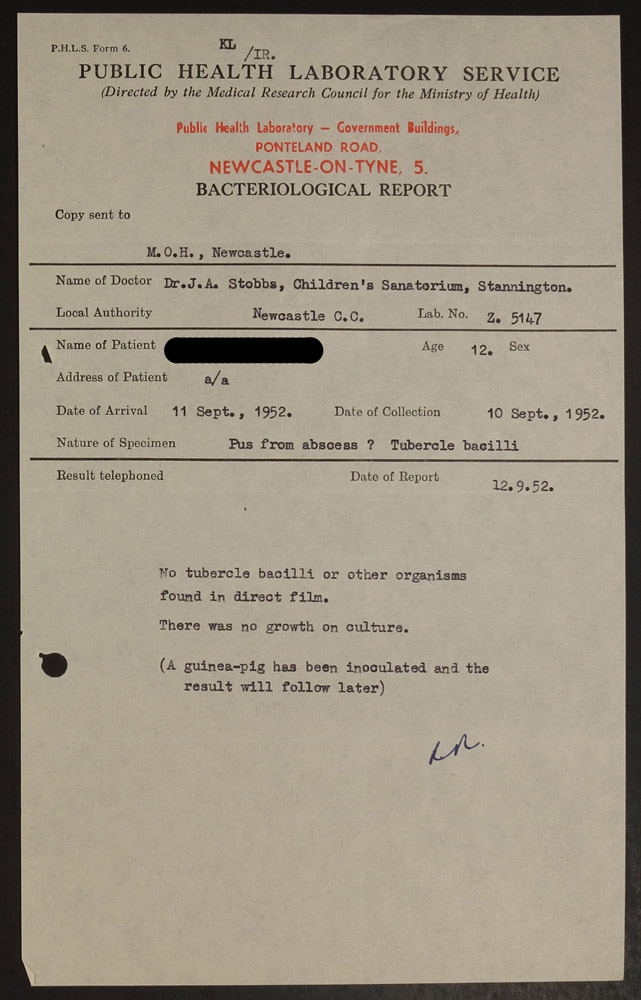
Commonly occurring Non-core documents:
- Medical report to institution (from local authority or other source) – a short report of a patient’s condition before coming to Stannington. Pre-NHS (and for a short while afterwards) local authorities would ‘sponsor’ a bed for a patient from their area, and the appearance of the form differs depending on the area.
- Permissions and medical history form – this appears in the late 1940s and alters very little over the years. It asks parents and guardians to give details of childhood illnesses, immunisations and permission for dental treatment and anaesthetic. We also find permissions slips for specific operations, vaguely for ‘an operation’, and other instances, such as day trips.
- Bacteriological reports – reports from a bacteriological laboratory showing the results of tests from samples, for example samples of pus being checked for tubercle bacilli. These change through time and are found in two types, a small sheet that would be stuck to the file, document or separate sheet of paper, or a longer thin sheet. In earliest files these may be pathologist’s reports.
- Dental card – showing condition of teeth and any treatment during the patient’s time at Stannington. Also sometimes optical or dermatological cards and check-ups.
- Correspondence with other hospitals and doctors – from before admission, during their stay and after the patient’s discharge from the Sanatorium. Communication from before a child entered Stannington usually arranged their admission. During their stay correspondence may have arranged a transfer for procedures at another hospital. Any correspondence after a child left Stannington was often with local authorities or the doctor or clinic providing follow up care.
- Temperature charts – most patients had their temperature taken twice a day throughout their stay and recorded on a chart, and bowel movements noted. On occasions a 4 hourly chart was used when a child was suffering from a high temperature.
- Correspondence with parents and family – includes letters arranging visits and interviews with doctors about the patient’s condition, and the child’s discharge home. These letters sometimes give an insight into home and family conditions.
- Out patients review reports – after discharge some patients, usually orthopaedic cases, might be reviewed to monitor progress, often on a three monthly or six monthly basis until the disease was quiescent.
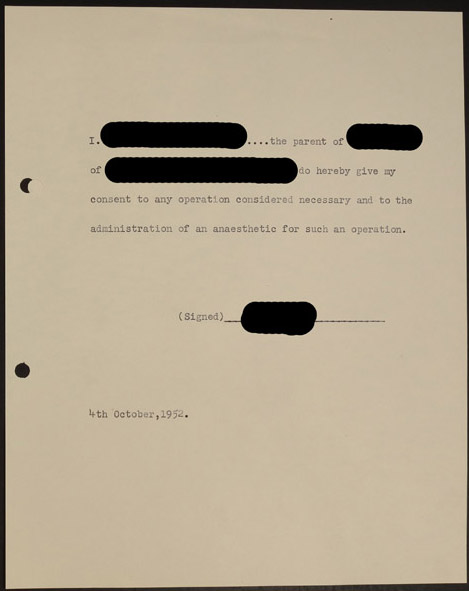
Some of the other non-core documents that we sometimes find:
- Transfer documentation, notes and charts from other hospitals – often enclosed in the file that was used at the other hospital.
- Things written or drawn by the children – very occasionally the patients seem to have got a hold of their file and written or drawn on them. On other occasions little drawings or letters have ended up in the file. As can be seen in the Flickr set, the patient in file HOSP/STAN/07/01/01/2697 was an amateur fortune teller!
- Newspaper cuttings – of stories about patients may later be put in the files, such as when patients later married etc.
- Permissions forms – in addition to the general Permissions and medical form given on arrival we also find permissions slips for specific operations, vaguely for ‘an operation’ like the example above, and other instances, such as day trips.
- Removal without medical consent slip – signed by a parent on removing their child from the sanatorium, either pre-typed or handwritten.
- Sputum charts – recorded the amount and colour of sputum produced on each day, and found in the latter end of the period our files cover. These long thin coloured graphs could almost be works of art.
- Artificial pneumothorax card – like an X-ray card, showing when an artificial pneumothorax was performed. This procedure collapses a lung, allowing it to rest and heal.
- Drug charts – occasionally we see charts detailing the time and date drugs like streptomycin and PAS were given.
- Diabetic charts – though these are a drug chart in that they record insulin intake, they also record sugar and keytones present in urine.
- Diet menus and instructions – for some patients with specific requirements we might find a typewritten sheet giving instructions of what the patient should and shouldn’t eat, or menus for a diet.
We are hoping that making some of the patient files accessible will give an idea of the contents of the collection as a whole. The collection has great potential for academic study of the radiographs and treatments that were used during a time of great development in treating tuberculosis, but also gives a valuable insight into the life of a sanatorium and its patients, and the perception of tuberculosis in wider society. You can view the whole Flickr collection here, and search the online catalogue here through our website. We hope you find the files as interesting as we do, and that they give a little insight into life at the sanatorium.

